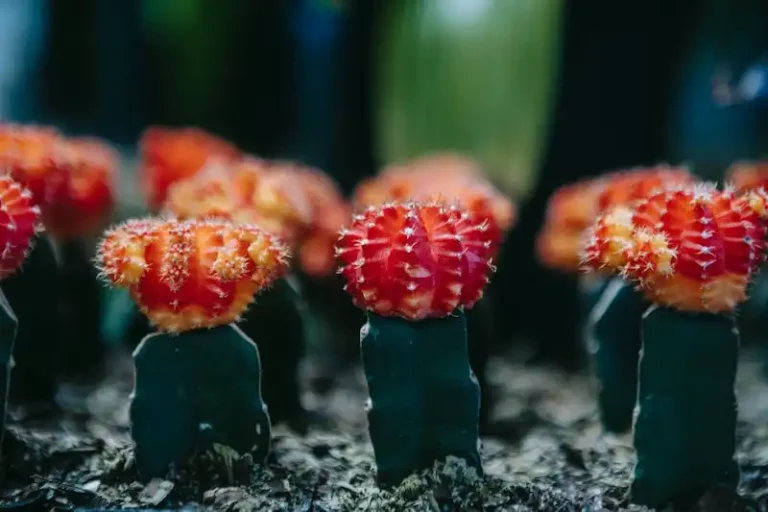If you’re a fan of the tangy, lemony flavor that lemons bring to dishes and drinks, why not try growing your own lemon tree? Not only are lemon trees easy to grow from seed, but they are also self-pollinating, meaning you don’t need another lemon tree nearby for successful fruit production.
Before you start planting, there are a few conditions you need to consider. Lemon trees are best grown in warm climates, as they thrive in temperatures between 70-85 degrees Fahrenheit (21-29 degrees Celsius). If you live in a cooler region, you can always grow your lemon tree in a pot and move it indoors during the colder months.
Now, let’s get started on planting your lemon seed. The first step is to save a lemon seed from a juicy, ripe lemon. You can either purchase a lemon from the store or use one from your own tree if you already have one. To save the seed, simply remove it from the lemon and wash off any residue.
Next, it’s time to plant the seed. Fill a small pot with moist, well-draining soil. Make a small hole in the soil and place the seed about half an inch deep. Cover the hole with soil and gently press down. Now, keep the pot somewhere warm and well-lit, like near a south-facing window or under grow lights.
As the seed starts to germinate, you’ll see a small sprout emerge from the soil. This is the first sign of growth! From here, it’s important to keep the soil consistently moist, but not waterlogged. Overwatering can kill the young plant, so make sure to test the top inch of soil with your finger before watering.
After a few weeks, you can begin to fertilize your lemon tree. Use a fertilizer specifically formulated for citrus trees, and follow the instructions on the package for application rates. This will help promote healthy growth and ensure your tree has all the nutrients it needs.
Once your lemon tree has established itself and is growing well, you can consider propagating more trees by taking cuttings. This allows you to have multiple lemon trees in your garden or share them with friends and family.
With proper care and attention, you’ll likely start seeing lemons on your tree within 2-3 years. That means you’ll be able to enjoy the juiciest, lemoniest lemons right from your own backyard!
Growing a Patio Lemon Tree in Winter
If you live in a northern climate where winter temperatures come and the warm summer months are short-lived, growing a lemon tree outside may be a challenge. Lemon trees are native to warm, tropical climates and are not typically hardy enough to survive freezing temperatures. However, with some care and protection, you can successfully grow a patio lemon tree year-round.
The first step to growing a patio lemon tree in winter is to choose a suitable variety. Some lemon tree varieties are more cold-hardy than others, so selecting the right one is crucial. Look for varieties such as the Improved Meyer lemon or the Ponderosa lemon, which have better tolerance for cooler temperatures.
Once you have chosen a suitable lemon tree variety, the next step is to start germination. The best time to start germinating lemon tree seeds is in late winter or early spring. To improve germination rates, you can soak the seeds in warm water overnight or scarify the seed coat by gently rubbing it with sandpaper. This will help the seeds absorb moisture and initiate growth.
After scarifying or soaking the seeds, plant them in a pot filled with organic potting soil. Make sure to plant the seeds with the pointed end facing downward, as this is where the root will develop. Cover the pot with plastic wrap to create a greenhouse-like environment that will help to retain moisture and warmth.
Place the pot in a warm and sunny location, where the temperature is consistently around 70 to 80 degrees Fahrenheit (21 to 27 degrees Celsius). It may take two to four weeks for the seeds to sprout, so be patient and keep the soil evenly moist during this time.
Once the seedlings have emerged, remove the plastic wrap and continue to care for the young lemon tree. Keep it in a sunny spot and water it regularly, allowing the soil to dry out slightly between waterings. Fertilize the tree every three to four weeks with a citrus-specific organic fertilizer to promote healthy growth.
During the winter months, when temperatures drop, it’s important to provide protection for your patio lemon tree. One simple way to do this is by moving the tree indoors or to a garage or basement. Alternatively, you can wrap the tree with burlap or blankets to insulate it from the cold. Avoid placing the tree near drafty windows or heating vents, as these can cause temperature fluctuations that can harm the tree.
Another option for winter protection is to invest in a greenhouse or cold frame. These structures provide a controlled environment that will keep your lemon tree warm and protected from frost and winter weather. They allow you to continue growing citrus year-round, even in colder climates.
By following these steps and providing the necessary protection, you can successfully grow a patio lemon tree through the winter months. Enjoy the benefits of having fresh lemons within reach, even when the weather outside is cold and dreary.
How to Grow Lemons Outdoors Year-Round in a Northern Climate
If you live in a northern climate, you might think that growing lemons outdoors year-round is impossible. However, with the right steps and materials, it is indeed possible to successfully grow lemon trees in colder regions. In this article, we will discuss how you can grow lemons outdoors year-round in a northern climate.
Step 1: Choose the Right Lemon Variety
Not all lemon varieties can withstand the cold temperatures of a northern climate. The Meyer lemon, for example, is known for its hardiness and ability to tolerate low temperatures. Make sure to choose a lemon variety that is suitable for your climate.
Step 2: Start with a Viable Lemon Seed or Plant
If you wish to grow lemons from seed, you can germinate a seed obtained from a fresh lemon. Alternatively, you can purchase a young lemon plant from a nursery. Keep in mind that growing lemons from seed takes longer to reach maturity compared to a grafted lemon tree.
Step 3: Provide the Right Growing Conditions
Lemons need well-draining soil to prevent root rot. Make sure the soil is not too soggy or waterlogged. Additionally, lemons thrive in full sunlight, so choose a location in your yard that receives plenty of sunlight throughout the day. If you don’t have a suitable outdoor space, you can also grow lemons on a sunny windowsill or an indoor patio.
Step 4: Protect from Frost
In colder climates, lemons can be damaged by early frost. To protect your lemon tree, cover it with a frost blanket or use other frost protection methods. Make sure to remove the frost cover during the day to allow sunlight to reach the plant.
Step 5: Provide Adequate Water and Fertilizers
Lemon trees need regular watering, especially during dry periods. However, avoid overwatering as this can lead to root rot. Additionally, fertilize your lemon tree according to its specific needs. Consult a local nursery for the best fertilizers to use for citrus plants in your area.
Step 6: Self-Pollinating or Other Trees
Most lemon trees are self-pollinating, which means they can produce fruit without the need for cross-pollination from other trees. However, having more than one lemon tree can increase the chances of successful pollination and improve fruit production.
Step 7: Protect from Extreme Cold
In extremely cold climates, you may need to take additional steps to protect your lemon tree. Using a coat or blanket to wrap the tree’s trunk can help insulate it from the cold. You can also use a heat lamp or other heating methods to provide warmth during freezing temperatures.
By following these steps, you can successfully grow lemons outdoors year-round in a northern climate. Remember to research the specific needs of your lemon variety and adapt your care accordingly. Good luck!
Video Growing a Winter Patio Lemon Tree
If you’re looking to grow a lemon tree year-round, even in colder climates, then growing a winter patio lemon tree is a great option. With the help of this video, you can learn how to successfully grow your own lemon tree in a container, allowing you to move it indoors during the colder months.
The materials you’ll need for this project are simple: a container, potting soil, lemon tree seeds, and some fertilizers. The first step is to collect the lemon tree seeds. You can either buy them from a nursery or collect them from a lemon fruit you bought from the store. Meyer lemon trees are a popular choice, but you can use other varieties as well.
Once you have your lemon tree seeds, the next step is to plant them. Fill your container with potting soil and plant the seeds about 1/2 inch deep. Water the soil and place the container in a spot where it can get plenty of sunlight. Lemon trees need at least 5-6 hours of sunlight per day to grow properly.
After a few months, your lemon tree should start to grow. Make sure to water it regularly and fertilize it according to the directions on the fertilizer package. As the tree grows, you may need to transplant it to a larger container to allow for more root growth.
Lemon trees are self-pollinating, so they don’t require any outside help to produce fruit. However, you can improve the chances of fruit production by gently shaking the branches to simulate the wind and promote pollination.
One of the benefits of growing a lemon tree in a container is that you can move it indoors during the winter months. Lemon trees are sensitive to frost and cold temperatures, so bringing them inside will protect them from any potential damage.
Once your lemon tree starts to bloom, you can enjoy the fragrant smell of the flowers and look forward to harvesting juicy lemons. Depending on the variety of lemon tree you’re growing, it may take anywhere from 1 to 5 years for the tree to start producing fruit.
If you’re new to growing citrus trees, watching a video tutorial on platforms like YouTube can be very helpful. There are many videos available that provide step-by-step instructions and tips for successful lemon tree cultivation.
So don’t wait any longer – start growing your own winter patio lemon tree today and enjoy the benefits of fresh lemons year-round!
When do Lemon Trees Bloom
Lemon trees are known for their beautiful, fragrant blossoms. The timing of their bloom depends on various factors, including the climate and the specific type of lemon tree.
In general, lemon trees tend to bloom in the spring and early summer months. This is when the weather is warmer and the days are longer, providing favorable conditions for the tree to produce blooms.
The blossoms of a lemon tree are not only visually stunning but also have a delightful lemony fragrance. These flowers are usually a creamy white color and can be found in clusters. The blooming period can last for several weeks, and during this time, bees and other pollinators are attracted to the flowers, aiding in the pollination process.
There are different types of lemon trees, and each may have a slightly different bloom time. For example, Meyer lemon trees are known for their early bloom, often starting to flower in the winter months. They are a popular choice for home growers as they can be grown indoors or outdoors.
If you’re looking to enjoy the benefits of a lemon tree year-round, you can consider growing them indoors. Indoor lemon trees can be grown in containers and placed near a sunny window or under grow lights to provide the necessary light and warmth for optimal growth and blooming.
When planting lemon trees outdoors, it’s important to choose a location that provides protection from frost and soggy soil. Frost can damage the tree, while overly wet soil can lead to root rot. Additionally, lemon trees need a warm climate to thrive and produce the juiciest fruit.
When germinating lemon trees from seed, it’s crucial to carefully follow the necessary steps. Lemon seeds need to be collected from a ripe fruit and planted in a suitable growing medium. Using a plastic bag or container to create a germination environment can improve the chances of successful seed sprouting.
Lemon seedlings should be planted in well-draining soil and provided with proper nutrients, such as fertilizers, to support healthy growth and vigorous blooming. It typically takes about 2 to 5 years for a lemon tree to start to bloom and produce fruit.
If you’re unsure about when your lemon tree will bloom, there are guides available that can help you determine the specific blooming period for your particular type of tree. Additionally, online resources and videos can provide useful information and step-by-step instructions to successfully grow and care for lemon trees.
Once your lemon tree starts to bloom and produce fruit, it’s important to regularly monitor its health and protect it from pests or diseases. Proper watering, pruning, and fertilizing can help maintain the tree’s vitality and ensure a bountiful harvest of delicious lemons.
Whether you’re growing lemon trees for their beautiful blooms or their tasty fruit, following these steps and tips can help you successfully grow and enjoy your own lemon tree at home.




